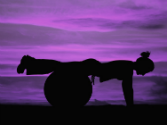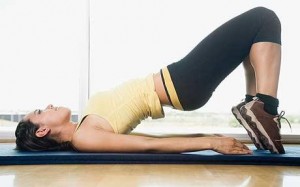 Pelvic floor health is crucial. As a mother of nine and an exercise enthusiast, I realize that probably one of the most important things that I can do is to strengthen my pelvic floor muscles. For women especially, the pelvic floor should always be thought of as key to the core muscles. While it is far too under-emphasized, it has gained attention since our mothers were giving birth. For that we should be grateful!
Pelvic floor health is crucial. As a mother of nine and an exercise enthusiast, I realize that probably one of the most important things that I can do is to strengthen my pelvic floor muscles. For women especially, the pelvic floor should always be thought of as key to the core muscles. While it is far too under-emphasized, it has gained attention since our mothers were giving birth. For that we should be grateful!
I remember being told by my ob/gyn, Dr. Tommy Megremis, after the birth of my sixth child, that I should seek out the help of a physical therapist who specialized in pelvic floor therapy because I was having symptoms of a weak pelvic floor. I actually had no idea what he was talking about! I had figured that I would simply have to bide my time before a surgical procedure would become a necessary and “normal” part of the aging process. I am grateful to Dr. Megremis for sending me in a better direction, and after working for about 4-5 months with the physical therapist, I really noticed a change. I was so encouraged. [Read more…]







 One of my New Year’s resolutions is to do more
One of my New Year’s resolutions is to do more  We are starting to hear more people talk about issues related to the pelvic floor, and this is a really good thing. Pregnancy, childbirth, episiotomy, fibroids, chronic coughing, menopause, weight gain or inactivity all can contribute to decreased tone, strength, and flexibility of the pelvic floor. When this happens we can experience symptoms of urinary or stool incontinence or other problems related to pelvic organs such as sagging or prolapse, low back pain, painful intercourse, etc. Since the most common is urinary incontinence, most women can relate to the experience of leaking urine, whether during pregnancy, postpartum, or as they get older. And for many, exercising is where it rears it’s ugly head.
We are starting to hear more people talk about issues related to the pelvic floor, and this is a really good thing. Pregnancy, childbirth, episiotomy, fibroids, chronic coughing, menopause, weight gain or inactivity all can contribute to decreased tone, strength, and flexibility of the pelvic floor. When this happens we can experience symptoms of urinary or stool incontinence or other problems related to pelvic organs such as sagging or prolapse, low back pain, painful intercourse, etc. Since the most common is urinary incontinence, most women can relate to the experience of leaking urine, whether during pregnancy, postpartum, or as they get older. And for many, exercising is where it rears it’s ugly head. Ok, lets get real. Urinary incontinence is very common in female runners (and those doing other forms of exercise). Researchers have found that as many as 30 percent of female runners have experienced incontinence while running. I happen to believe the number is a lot higher, it’s just not something most of us like to talk about. In fact, for women in general (not just those who exercise), it has been said that 1/3 have issues of incontinence as they age, and some sources say as much as 60% of women deal with the issue of incontinence. With statistics like this, why aren’t we talking about it? We should be.
Ok, lets get real. Urinary incontinence is very common in female runners (and those doing other forms of exercise). Researchers have found that as many as 30 percent of female runners have experienced incontinence while running. I happen to believe the number is a lot higher, it’s just not something most of us like to talk about. In fact, for women in general (not just those who exercise), it has been said that 1/3 have issues of incontinence as they age, and some sources say as much as 60% of women deal with the issue of incontinence. With statistics like this, why aren’t we talking about it? We should be.  I have written about the
I have written about the  The following is a guest post from physical therapist,
The following is a guest post from physical therapist,  My favorite exercise is the push-up. It is great for upper body and core strength, and you don’t have to have any equipment to do it. I remember my good friend Karrie, who is a personal trainer, telling me that when she is pressed for time with her clients, she likes to do push-ups because they are such an efficient strength exercise. Since I don’t do sit-ups because of the
My favorite exercise is the push-up. It is great for upper body and core strength, and you don’t have to have any equipment to do it. I remember my good friend Karrie, who is a personal trainer, telling me that when she is pressed for time with her clients, she likes to do push-ups because they are such an efficient strength exercise. Since I don’t do sit-ups because of the
Follow Us